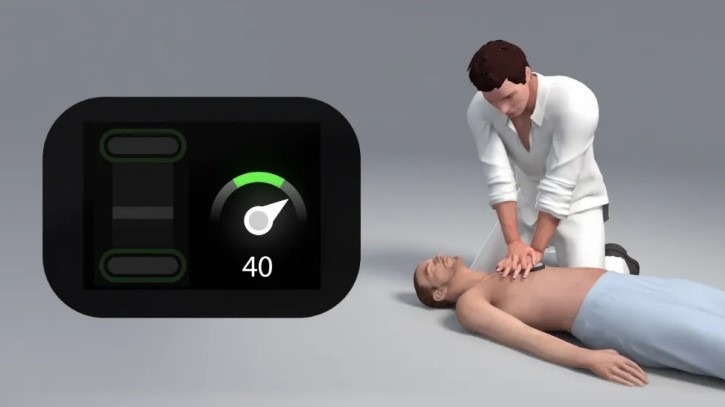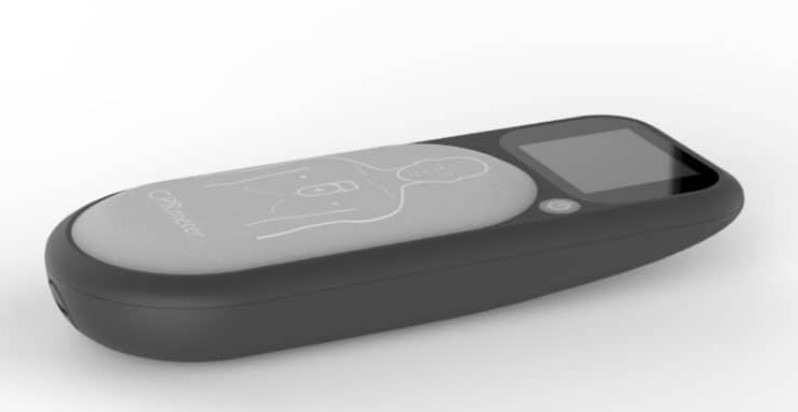Health
What does a Chest Compression Feedback Device Monitor

Table of Contents
Introduction to Chest Compression Feedback Devices
For years, healthcare professionals and first responders have sought ways to enhance the effectiveness of cardiopulmonary resuscitation (CPR), a critical procedure that can significantly increase the chance of survival during cardiac arrest. Enter the chest compression feedback device—a powerful tool offering real-time chest compression feedback, ensuring the best possible outcomes. These innovative devices are revolutionizing CPR, providing objective data to monitor and guide quality compressions.
What does a Chest Compression Feedback Device Monitor: A Thorough Report

A chest compression feedback device is an intuitive, user-friendly tool that takes the guesswork out of CPR. By harnessing advanced technology, it delivers real-time feedback on the quality of chest compressions, focusing on critical metrics like compression depth, rate, and recoil.
The device uses sensors to measure compression force and depth, which are then compared against pre-established guidelines set by the American Heart Association or the European Resuscitation Council. This valuable data assists rescuers in making on-the-spot adjustments to deliver more effective compressions, increasing the likelihood of positive patient outcomes.
What are the Benefits of Using a Chest Compression Feedback Device During CPR?

The significance of these life-saving devices cannot be overstated. Studies show that manual chest compressions often fail to meet the minimum depth and rate recommendations, thus reducing the effectiveness of CPR. A chest compression feedback device rectifies this by providing instant, accurate feedback, enabling the performer to correct their technique in real-time.
Moreover, these devices can contribute to improved performance during training, instilling confidence in healthcare providers, and enhancing their skill set. Their use can ultimately result in improved patient outcomes, potentially saving more lives.
Which Chest Compression Feedback Devices are Recommended by Healthcare Professionals?
Numerous medical device manufacturers have developed chest compression feedback devices, all with the common aim of enhancing CPR quality. The selection of a specific device will depend on factors such as ease of use, cost, and compatibility with other equipment. While we cannot endorse specific brands, we encourage users to research, consult experts, and consider devices approved by trusted health organizations for assurance of safety and effectiveness.
How Accurate are Chest Compression Feedback Devices in Providing Real-Time Feedback?
Accuracy is one of the hallmarks of chest compression feedback devices. They employ sophisticated sensor technology to deliver precise, real-time feedback on CPR performance. Various studies have attested to the accuracy and reliability of these devices, endorsing their use in both training and real-world emergency situations.
Are Chest Compression Feedback Devices Suitable for Both Adults and Children?
Yes, chest compression feedback devices can be used for both adults and children, with certain devices offering age-specific modes to account for different compression depth and rate requirements. As always, it’s important to follow the manufacturer’s instructions and resuscitation guidelines for the respective age group.
Incorporating Chest Compression Feedback Devices Into Training Programs
The integration of chest compression feedback devices into training programs is a game-changer. They provide an unbiased, objective assessment of CPR performance, offering immediate corrective feedback that promotes the development of effective, life-saving skills. By leveraging this technology, healthcare providers and emergency responders can continuously refine their technique, ultimately leading to improved patient outcomes.
Research on the Effectiveness of Chest Compression Feedback Devices
Several studies reinforce the effectiveness of chest compression feedback devices. Research indicates a marked improvement in compression depth and rate when these devices are used. In turn, this translates to better blood flow during cardiac arrest, increasing the chances of survival.
A landmark study published in the American Journal of Emergency Medicine highlighted that the use of chest compression feedback devices led to a significant increase in adequate compression depth and rate. This research underscores the essential role of these devices in performing high-quality CPR.
The Future of CPR: Chest Compression Feedback Devices
As the field of emergency medicine advances, chest compression feedback devices will continue to play a pivotal role in ensuring the quality of CPR. Their ability to provide real-time, accurate feedback has made them indispensable tools for healthcare providers worldwide. By making CPR more effective and enhancing the skills of those who administer it, chest compression feedback devices are not just improving patient care—they’re saving lives.
These devices are not just the future of CPR—they’re the present. The integration of technology into CPR practices has already begun, and the life-saving impact of these devices is evident. The data speaks for itself: quality compressions save lives, and chest compression feedback devices are the key to achieving them.
Remember, your journey to mastering CPR doesn’t end here. Stay informed, keep training, and continue saving lives—one quality compression at a time.
FAQs on What does a Chest Compression Feedback Device Monitor
Now that we’ve delved into the workings and benefits of chest compression feedback devices, let’s address some common queries related to these revolutionary tools.
1. Can a Chest Compression Feedback Device Improve CPR Performance?
Yes, chest compression feedback devices have been proven to significantly improve the quality of CPR performance. By providing real-time, objective feedback on important metrics such as compression depth and rate, these devices empower healthcare providers to adjust their technique instantly. This leads to more effective chest compressions and improved survival outcomes.
2. Are There Different Types of Chest Compression Feedback Devices Available?
Yes, there are various types of chest compression feedback devices available in the market. They range from standalone devices to integrated systems within automated external defibrillators (AEDs). Each type and model comes with its unique features and specifications. Therefore, it’s important to conduct comprehensive research and consult with experts to choose the one that best fits your needs.
3. What does a Chest Compression Feedback Device Monitor During CPR?
Chest compression feedback devices primarily measure two essential metrics during CPR – compression depth and compression rate. These parameters align with international guidelines, such as those set by the American Heart Association and the European Resuscitation Council. Some advanced devices may also monitor additional parameters like compression recoil and hand position to further enhance the quality of compressions.
4. How Can Healthcare Providers Incorporate Chest Compression Feedback Devices Into Their Training Programs?
Chest compression feedback devices can be seamlessly integrated into CPR training programs. They provide real-time feedback, which helps trainees understand and improve their technique. Additionally, trainers can use the objective data from these devices to assess performance and provide personalized feedback. By focusing on the quality of compressions, these devices create more effective, confidence-building training sessions.
Also Read: Slope Unblocked Minecraft: A Detailed Guide (2023)
Conclusion: What does a Chest Compression Feedback Device Monitor
In conclusion, chest compression feedback devices have transformed the way we approach CPR, making it more effective and empowering healthcare providers with data-driven feedback. They embody the intersection of technology and healthcare, emphasizing the critical role that innovation plays in saving lives.
In the face of cardiac arrest, every second counts. It is the quality of compressions that can make the difference between life and death. Chest compression feedback devices are indispensable tools in this race against time, providing us with accurate, real-time information to guide life-saving actions.
The future is bright for these innovative devices. As technology continues to advance, we can expect even more accurate and comprehensive feedback devices that will undoubtedly improve CPR outcomes and save countless lives.
By adopting these devices in healthcare settings and training programs, we are taking a massive leap towards a future where every chest compression counts. And in the realm of cardiac arrest, where every heartbeat matters, this is a leap worth taking.

-

 Health5 years ago
Health5 years agoAdvantages and Disadvantages of Milk
-

 Tech4 years ago
Tech4 years ago6 Tips to Improving E-Commerce Websites
-

 Home5 years ago
Home5 years agoAdvantages and Disadvantages of Village Life in Points
-

 Travel5 years ago
Travel5 years agoAdvantages and Disadvantage of Travelling
-

 Sports3 years ago
Sports3 years agoThe benefits of playing an online live casino
-

 Tech5 years ago
Tech5 years ago10+ Advantages and Disadvantages of Mobile Phones in Points
-

 Tech5 years ago
Tech5 years agoEssay on Advantages and Disadvantages of Offline Shopping
-

 Tech5 years ago
Tech5 years ago8+ Advantages and Disadvantages of Motorcycle |Having Bike